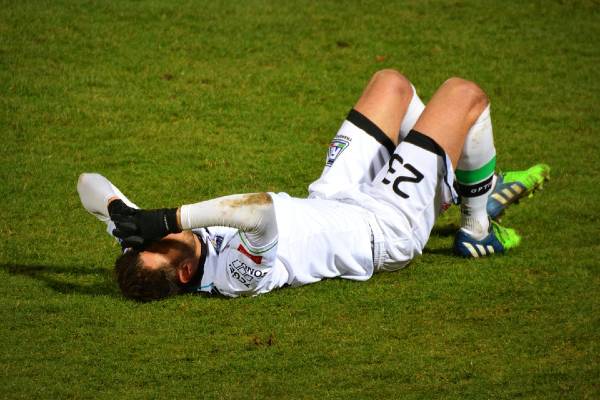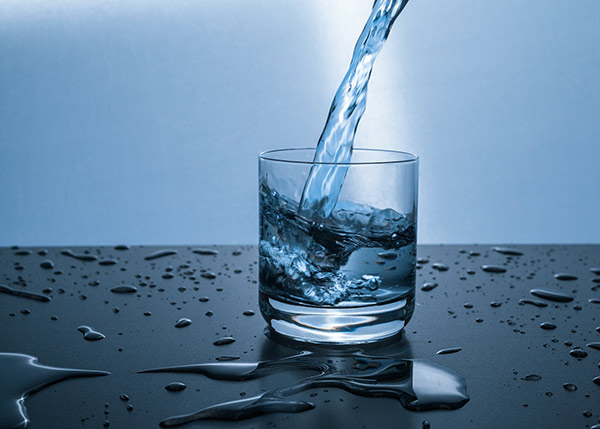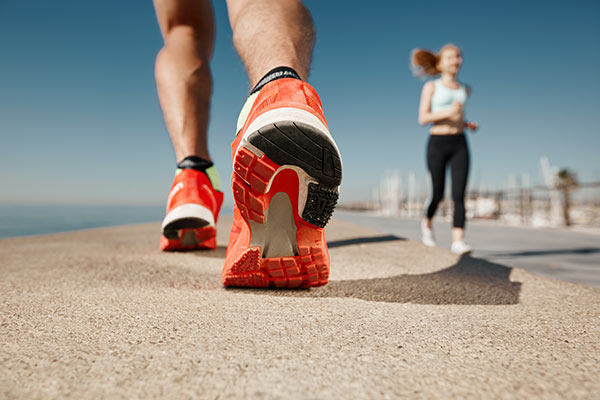5 Tips to Speed Up Your Recovery During Soccer Pre-Season
It’s that time of the year again. You’ve realised you haven’t done as much preparation for pre-season as you’d hoped and unsurprisingly, your weekday mornings are made up of aches, pains and muscle soreness. So how can you make the pre-season much more manageable? What’s best for recovery during soccer pre-season?
Recovery during soccer pre-season is a critical component of preparation for the season ahead (1). Ensuring that you are physically and mentally prepared for the demands of the upcoming season is so important for optimising your performance. So here are five recovery techniques that you can use to maximise performance, reduce the risk of injury, and promote overall well-being during this crucial period.
- Nutrition and Hydration: Fuelling the Body for Success
Nutrition plays a fundamental role in the recovery process (2). They provide the body with the essential nutrients needed to repair muscles, replenish glycogen stores, and support overall recovery. During your intense training sessions, energy stores will be depleted and increase muscle breakdown. Therefore, it’s crucial to prioritise nutrition to optimise performance and recovery during soccer pre-season.
A well-balanced diet should include a mix of all major food groups such as carbohydrates, proteins, healthy fats, vitamins, and minerals. Carbohydrates are particularly important for replenishing glycogen stores and providing energy for training sessions. While protein is essential for muscle repair and growth. Healthy fats, vitamins, and minerals support various bodily functions, including immune function and tissue repair.
Hydration is equally important. Dehydration can impair performance, increase the risk of injury, and prolong recovery time. Athletes lose significant amounts of fluids through sweat during training sessions. This makes it essential to replace lost fluids by drinking water and electrolyte-rich beverages. Proper hydration supports cardiovascular function, regulates body temperature, and aids in nutrient transport and waste removal.
- Rest and Sleep: The Importance of Recovery during soccer pre-season
Rest and sleep are essential components of the recovery process (3). This allows the body to repair and regenerate tissues, regulate hormone levels and consolidate learning and memory. During the preseason, you’ll undergo rigorous training schedules that can lead to fatigue, muscle soreness, and decreased performance.
Adequate rest and quality sleep are crucial for optimising recovery and performance. Sleep is a time when the body repairs and rebuilds tissues damaged during training. It also synthesises hormones involved in growth and repair, and consolidates motor skills and cognitive function. Lack of sleep can impair immune function, increase the risk of injury, and negatively impact mood and cognitive function.
It is also important to prioritise sleep hygiene practices. These include; maintaining a consistent sleep schedule, creating a conducive sleep environment, and avoiding stimulants like caffeine and electronic devices before bedtime. Additionally, scheduling rest days and incorporating active recovery activities can help prevent overtraining and promote physical and mental well-being during the preseason.
- Active Recovery: Enhancing Blood Flow and Mobility
Active recovery involves engaging in low-intensity activities. This helps to promote blood flow, reduce muscle soreness, and enhance recovery between training sessions. Active recovery involves gentle movement that helps flush out metabolic by-products, deliver nutrients to muscles, and accelerate the recovery process.
Common active recovery activities include swimming, cycling, light jogging, yoga, and mobility exercises. These activities increase blood flow to muscles, improve flexibility and range of motion, and promote relaxation and stress relief. Active recovery sessions should be performed at a low intensity and duration to avoid adding additional stress to the body.
Incorporating active recovery during soccer pre-season training schedules can help players recover more quickly from intense workouts. It also helps to reduce the risk of injury, and maintain overall physical fitness and performance throughout the season. You should listen to your body and adjust the intensity and duration of active recovery activities based on your individual needs and preferences.
- Soft Tissue Therapy: Alleviating Muscle Tension and Soreness
Soft tissue therapy techniques such as massage, foam rolling, and self-myofascial release can help alleviate muscle tension. It can also help reduce soreness, and improve tissue mobility and flexibility. These techniques target tight muscles promoting circulation, reducing inflammation, and accelerating the healing process.
Massage therapy involves applying pressure to specific muscles and tissues to release tension, improve blood flow, and promote relaxation. Foam rolling and self-myofascial release techniques can be done by using using a foam roller or massage ball to apply pressure to tight or sore muscles. This helps to release tightness and restore mobility.
Integrating soft tissue therapy into the preseason recovery routine can help maintain optimal muscle function, reduce the risk of overuse injuries, and enhance overall performance. It’s helpful to incorporate these techniques into your post-training or post-match recovery routine and adjust the intensity and duration based on your needs and preferences.
- Mind-Body Recovery: Incorporating Mental Wellness Practices
In addition to physical recovery techniques, it’s essential to prioritise mental well-being during the preseason (2). The demands of training and competition can take a toll on mental health, leading to stress, anxiety, and burnout. Therefore, incorporating mind-body recovery practices can help players manage stress, improve focus and concentration, and enhance overall mental resilience.
Mind-body recovery practices encompass a wide range of techniques, including mindfulness meditation, deep breathing exercises, visualisation, and progressive muscle relaxation. These practices help promote relaxation, reduce stress hormones, and improve mental clarity and concentration.
Prioritising mental wellness is highly beneficial to performance, you can do this by incorporating mind-body recovery practices into your daily routine. This could involve scheduling mindfulness sessions before or after training, providing resources and support for mental health awareness and education, and creating a supportive team culture that values mental well-being.
So there you have it, 5 ways that you can help make those aches and pains a bit more bearable during the pre-season and be ready to go when round 1 rolls around. With this comprehensive and holistic approach to recovery, you can maximise your potential and achieve success on and off the field.
If you have any injuries that don’t seem to be improving or are slowing you down during pre-season, be sure to book in with one of our therapists and we’ll get you back on the field in no time!
References:
Calleja-González, J., Mielgo-Ayuso, J., Miguel-Ortega, Á., Marqués-Jiménez, D., Del Valle, M., Ostojic, S. M., … & Refoyo, I. (2021). Post-exercise recovery methods focus on young soccer players: a systematic review. Frontiers in Physiology, 12, 505149
Nédélec, M., McCall, A., Carling, C., Legall, F., Berthoin, S., & Dupont, G. (2013). Recovery in soccer: part II—recovery strategies. Sports medicine, 43, 9-22.
Brink, M. S., Nederhof, E., Visscher, C., Schmikli, S. L., & Lemmink, K. A. (2010). Monitoring load, recovery, and performance in young elite soccer players. The Journal of Strength & Conditioning Research, 24(3), 597-603.





